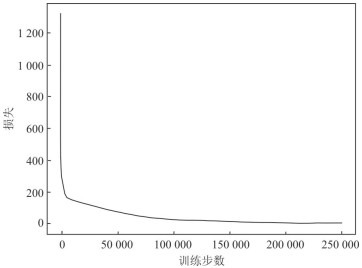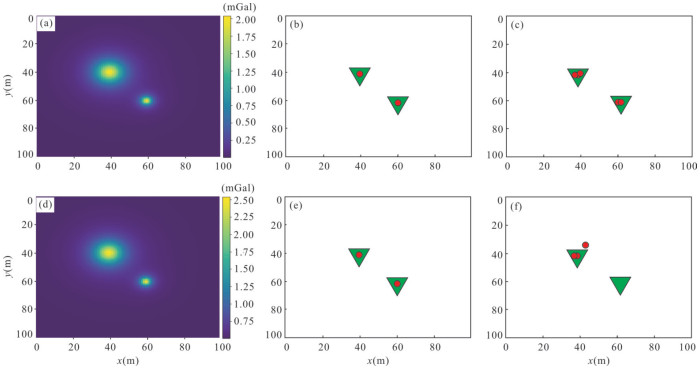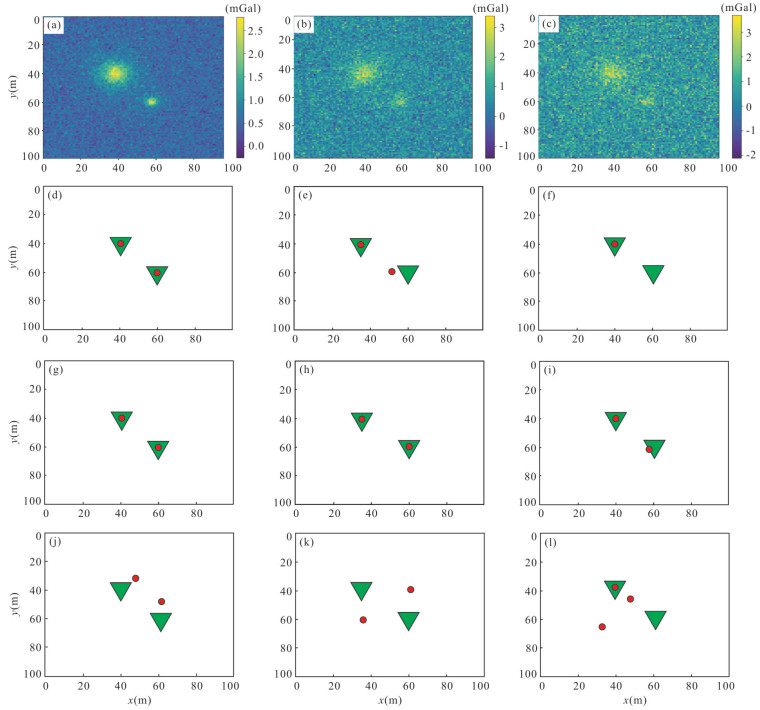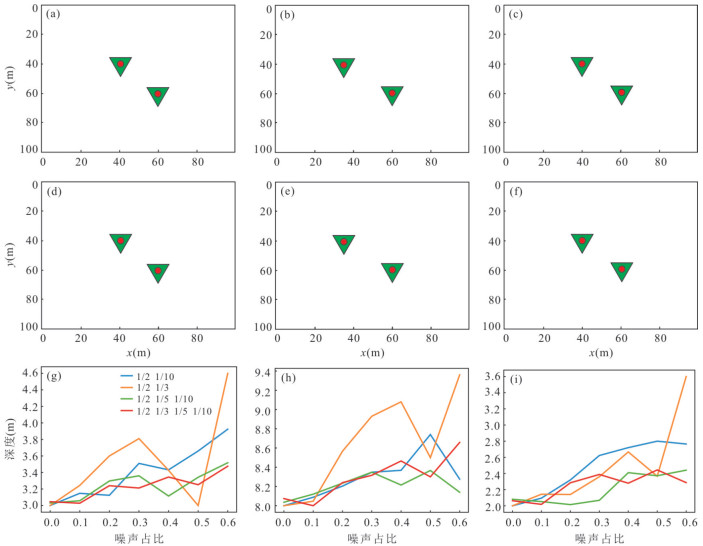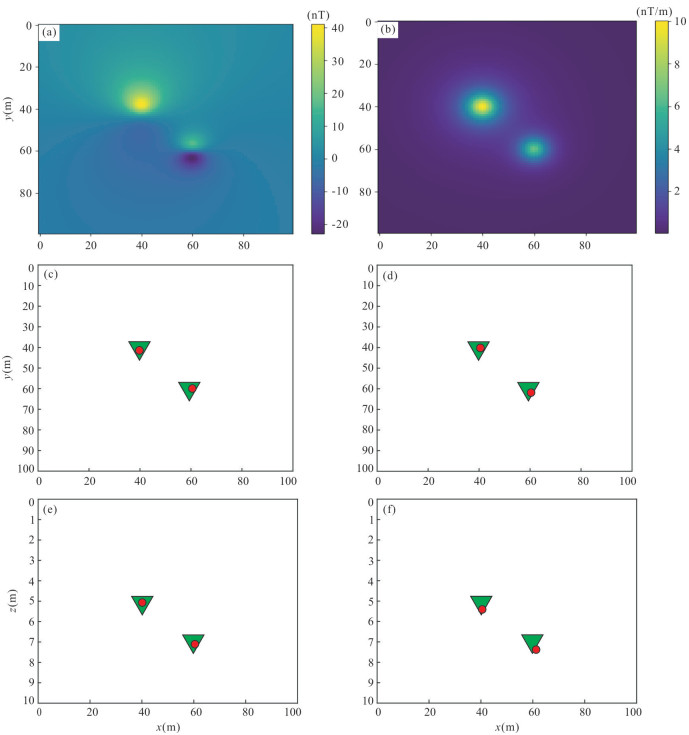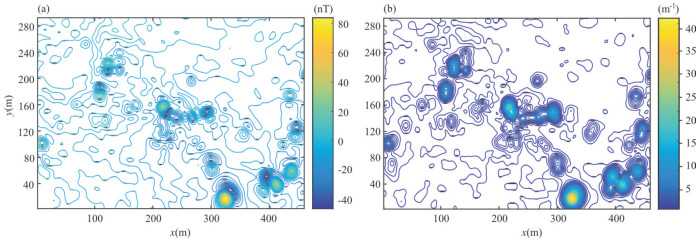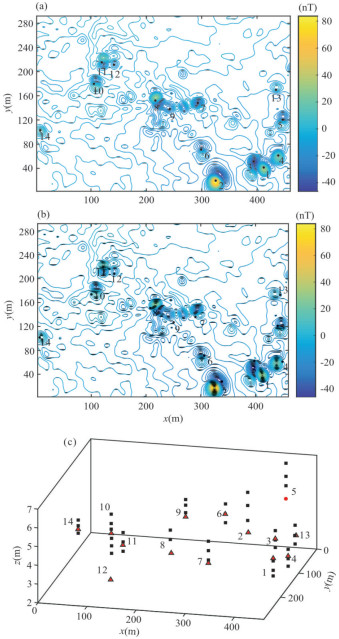Ratio Method for Calculating the Source Location of Gravity and Magnetic Anomalies Based on Deep Learning
-
摘要: 场源中心位置的计算是重磁数据反演的主要任务之一,现主要通过异常与场源位置之间的数学物理方程来估算地质体的位置.为了快速、准确获得地质体的位置信息,提出基于重磁梯度比值的深度学习技术实现场源位置的获取;其利用深度学习技术所建立的重磁梯度比值水平分布与地质体埋深、构造指数的关系,快速实现异常场源位置计算,且提出利用多个值的相互关系来更加准确、稳定地计算出地质体的信息.该方法可以计算复杂地质体的中心位置,且避免了以往线性方程反演方法需对结果进行筛选的复杂过程,对于存在剩磁的磁异常则采用解析信号的深度学习方法来进行位置反演.理论模型试验证明利用梯度比值的深度学习方法可以准确获得地质体的深度,且通过对比更多点的深度学习计算结果发现,采用多个不同比例极值点可以减弱噪声带来的干扰,从而得到更加准确的位置.最后将该方法应用于实测磁异常的反演工作,获得了地下磁性物体的中心位置,且计算结果与欧拉反褶积法相接近,因此该方法具有良好的实用性.Abstract: The location of field source's center is one important purpose in the inversion of gravity and magnetic data, and the location of geological body is estimated mainly through the linear equation between the anomaly and the location of the field source. In order to obtain the location accurately and quickly, a deep learning technique based on the ratio of gravity and magnetic gradient is proposed to achieve the acquisition of the field source location in this paper, which can calculate the field source location quickly by using the deep learning technique to learn the relationship between the horizontal distribution of the gravity and magnetic gradient ratio, the buried depth, and the index. It is also proposed to use the mutual relationship of multiple values to calculate the information of the geological body more accurately and stably. This method can calculate the center location of complex geological bodies, and avoid the complicated process of screening the results of the previous methods, using the deep learning method of analytic signal for magnetic anomaly with remanent magnetism to achieve the location inversion. The application effect of the method is tested by theoretical models, which shows that the proposed method can obtain the depth information of the geological body accurately. Comparing the calculation results of the deep learning of more points, it is found that the use of multiple extreme points of different proportions can reduce the interference by noise and can get a location more accurately, so the method has good practicability.
-
Key words:
- gravity magnetic source /
- center location /
- ratio /
- deep learning /
- geophysics
-
图 4 不同组合梯度比值极值点的深度学习法与传统欧拉反褶积法水平结果对比
a. 叠加20%高斯白噪声的重力异常;b. 叠加50%高斯白噪声的重力异常;c. 叠加70%高斯白噪声的重力异常;d. 1/2、1/3极值点联合计算叠加20%高斯白噪声的重力异常的水平位置;e. 1/2、1/3极值点联合计算叠加50%高斯白噪声的重力异常的水平位置;f. 1/2、1/3极值点联合计算叠加70%高斯白噪声的重力异常的水平位置;g. 1/2、1/10极值点联合计算叠加20%高斯白噪声的重力异常的水平位置;h. 1/2、1/10极值点联合计算叠加50%高斯白噪声的重力异常的水平位置;i. 1/2、1/10极值点联合计算叠加70%高斯白噪声的重力异常的水平位置;j. 欧拉反褶积计算叠加20%高斯白噪声的重力异常的水平位置;k. 欧拉反褶积计算叠加50%高斯白噪声的重力异常的水平位置;l. 欧拉反褶积计算叠加70%高斯白噪声的重力异常的水平位置. 图d~l中▼代表计算理论位置,●代表计算位置
Fig. 4. Comparison of the horizontal position calculated by different combination of gradient ratio's deep learning methods and traditional methods
图 5 不同组合梯度比值极值点的深度学习法计算结果
a. 1/2、1/5、1/10极值点联合计算叠加20%高斯白噪声的重力异常的水平位置;b. 1/2、1/5、1/10极值点联合计算叠加50%高斯白噪声的重力异常的水平位置;c. 1/2、1/5、1/10极值点联合计算叠加70%高斯白噪声的重力异常的水平位置;d. 1/2、1/3、1/5、1/10极值点联合计算叠加20%高斯白噪声的重力异常的水平位置;e. 1/2、1/3、1/5、1/10极值点联合计算叠加50%高斯白噪声的重力异常的水平位置;f. 1/2、1/3、1/5、1/10极值点联合计算叠加70%高斯白噪声的重力异常的水平位置;g. 不同噪声、不同极值点组合深度学习计算理论深度为3m的地质体的深度;h. 不同噪声、不同极值点组合深度学习计算理论深度为8 m的地质体的深度;i. 不同噪声、不同极值点组合深度学习计算的构造指数. 图a~f中▼代表理论位置,●代表计算位置
Fig. 5. The deep learning's results calculated by combination of gradient ratio's different extreme value point
表 1 不同深度下,深度学习在有无剩磁的埋深计算对比
Table 1. Depth calculated by deep learning at different theoretical depth
地质体理论埋深(m) 化极后计算深度(m) 解析信号计算深度(m) 5.0(1)、7.0(2) 5.1(1)、7.2(2) 5.3(1)、7.4(2) 5.5(1)、7.5(2) 5.6(1)、7.7(2) 5.2(1)、7.9(2) 6.0(1)、8.0(2) 6.3(1)、8.2(2) 6.4(1)、8.4(2) 6.5(1)、8.5(2) 6.8(1)、8.3(2) 6.9(1)、8.9(2) 注:括号中数字代表不同地质体的序号. 表 2 深度学习模型与欧拉反褶积法识别炸弹的深度
Table 2. Bomb depth calculated by deep learning model and Euler deconvolution
序号 比值深度学习计算深度(m) 欧拉反褶积计算埋深(m) 构造指数 1 5.1 5.8 2.7 2 2.9 3.5 2.8 3 3.1 2.6 3.1 4 3.5 3.0 3.2 5 3.2 2.6 4.3 6 4.5 4.0 3.0 7 2.9 3.0 2.8 8 3.3 3.3 3.6 9 5.1 5.3 3.5 10 4.5 4.7 3.6 11 2.5 3.9 2.9 12 4.4 4.0 4.0 13 3.7 2.7 4.0 14 3.5 3.3 3.1 -
Beiki, M., 2013. TSVD Analysis of Euler Deconvolution to Improve Estimating Magnetic Source Parameters: An Example from the Åsele Area, Sweden. Journal of Applied Geophysics, 90: 82-91. https://doi.org/10.1016/j.jappgeo.2013.01.002 Cao, S. J., Zhu, Z. Q., Lu, G. Y., 2012. Gravity Tensor Euler Deconvolution Solutions Based on Adaptive Fuzzy Cluster Analysis. Journal of Central South University (Science and Technology), 43(3): 1033-1039 (in Chinese with English abstract). http://epub.cnki.net/grid2008/docdown/docdownload.aspx?filename=ZNGD201203039&dbcode=CJFD&year=2012&dflag=pdfdown Florio, G., Fedi, M., 2014. Multiridge Euler Deconvolution. Geophysical Prospecting, 62(2): 333-351. https://doi.org/10.1111/1365-2478.12078 Gerovska, D., Araúzo-Bravo, M. J., 2003. Automatic Interpretation of Magnetic Data Based on Euler Deconvolution with Unprescribed Structural Index. Computers & Geosciences, 29(8): 949-960. https://doi.org/10.1016/S0098-3004(03)00101-8 Han, W. X., Zhou, Y. T., Chi, Y., 2018. Deep Learning Convolutional Neural Networks for Random Noise Attenuation in Seismic Data. Geophysical Prospecting for Petroleum, 57(6): 862-869, 877 (in Chinese with English abstract). http://en.cnki.com.cn/Article_en/CJFDTotal-SYWT201806008.htm Hou, Z. L., Wang, E. D., Zhou, W. N., et al., 2019. Euler Deconvolution of Gravity Gradiometry Data and the Application in Vinton Dome. Oil Geophysical Prospecting, 54(2): 472-479, 242 (in Chinese with English abstract). http://www.researchgate.net/publication/332846748_Euler_deconvolution_of_gravity_gradiometry_data_and_the_application_in_Vinton_Dome Lu, B. L., Fan, M. N., Zhang, Y. Q., 2009. The Calculation and Optimization of Structure Index in Euler Deconvolution. Progress in Geophysics, 24(3): 1027-1031 (in Chinese with English abstract). http://www.cnki.com.cn/Article/CJFDTotal-DQWJ200903030.htm Ma, G. Q., 2013. The Study on the Automatic Interpretation Methods of Potential Field (Gravity & Magnetic) and Its Gradients (Dissertation). Jilin University, Changchun (in Chinese with English abstract). Mushayandebvu, M. F., van Driel, P., Reid, A. B., et al., 2001. Magnetic Source Parameters of Two-Dimensional Structures Using Extended Euler Deconvolution. Geophysics, 66(3): 814-823. https://doi.org/10.1190/1.1444971 Nabighian, M. N., 1972. The Analytic Signal of Two-Dimensional Magnetic Bodies with Polygonal cross-Section: Its Properties and Use for Automated Anomaly Interpretation. Geophysics, 37(3): 507-517. https://doi.org/10.1190/1.1440276 Peters, L. J., 1949. The Direct Approach to Magnetic Interpretation and Its Practical Application. Geophysics, 14(3): 290-320. https://doi.org/10.1190/1.1437537 Reid, A. B., Allsop, J. M., Granser, H., et al., 1990. Magnetic Interpretation in Three Dimensions Using Euler Deconvolution. Geophysics, 55(1): 80-91. https://doi.org/10.1190/1.1442774 Reid, A. B., Thurston, J. B., 2014. The Structural Index in Gravity and Magnetic Interpretation: Errors, Uses, and Abuses. Geophysics, 79(4): J61-J66. https://doi.org/10.1190/geo2013-0235.1 Rumelhart, D. E., Hinton, G. E., Williams, R. J., 1986. Learning Representations by Back-Propagating Errors. Nature, 323(6088): 533-536. https://doi.org/10.1038/323533a0 Salem, A., Ravat, D., Mushayandebvu, M. F., et al., 2004. Linearized Least-Squares Method for Interpretation of Potential-Field Data from Sources of Simple Geometry. Geophysics, 69(3): 783-788. https://doi.org/10.1190/1.1759464 Stavrev, P., Reid, A., 2010. Euler Deconvolution of Gravity Anomalies from Thick Contact/Fault Structures with Extended Negative Structural Index. Geophysics, 75(6): I51-I58. https://doi.org/10.1190/1.3506559 Sun, Y. S., 1980. Computing the Vertical Second Grder Derivative of Gravitational and Magnetic Anomalies. Oil Geophysical Prospecting, 15(6): 45-62 (in Chinese with English abstract). Thompson, D. T., 1982. EULDPH: A New Technique for Making Computer-Assisted Depth Estimates from Magnetic Data. Geophysics, 47(1): 31-37. https://doi.org/10.1190/1.1441278 Wang, H. R., 2020. The Study on the Gravity and Magnetic Inversion Based on Parallel Computing and Deep Learning Algorithm (Dissertation). Jilin University, Changchun (in Chinese with English abstract). Yang, F. S., Ma, J. W., 2019. Deep-Learning Inversion: a Next-Generation Seismic Velocity Model Building Method. Geophysics, 84(4): 583-599. https://doi.org/10.1190/geo2018-0249.1 Yao, C. L., Guan, Z. N., Wu, Q. B., et al., 2004. An Analysis of Euler Deconvolution and Its Improvement. Geophysical and Geochemical Exploration, 28(2): 150-155 (in Chinese with English abstract). http://search.cnki.net/down/default.aspx?filename=WTYH200402017&dbcode=CJFD&year=2004&dflag=pdfdown Zhang, C. Y., Mushayandebvu, M. F., Reid, A. B., et al., 2000. Euler Deconvolution of Gravity Tensor Gradient Data. Geophysics, 65(2): 512-520. https://doi.org/10.1190/1.1444745 Zhang, G. Y., Wang, Z. Z., Lin, C. Y., et al., 2020. Seismic Reservoir Prediction Method Based on Wavelet Transform and Convolutional Neural Network and Its Application. Journal of China University of Petroleum (Edition of Natural Science), 44(4): 83-93 (in Chinese with English abstract). Zheng, H., Zhang, B, 2020. Intelligent Seismic Data Interpolation via Convolutional Neural Network. Progress in Geophysics, 35(2): 721-727 (in Chinese with English abstract). Zhou, W. Y., Ma, G. Q., Hou, Z. L., et al., 2017. The Study on the Joint Euler Deconvolution Method of Full Tensor Gravity Data. Chinese Journal of Geophysics, 60(12): 4855-4865 (in Chinese with English abstract). http://www.researchgate.net/publication/326395072_The_study_on_the_joint_Euler_deconvolution_method_of_full_tensor_gravity_data 曹书锦, 朱自强, 鲁光银, 2012. 基于自适应模糊聚类分析的重力张量欧拉反褶积解. 中南大学学报(自然科学版), 43(3): 1033-1039. https://www.cnki.com.cn/Article/CJFDTOTAL-ZNGD201203039.htm 韩卫雪, 周亚同, 池越, 2018. 基于深度学习卷积神经网络的地震数据随机噪声去除. 石油物探, 57(6): 862-869, 877. doi: 10.3969/j.issn.1000-1441.2018.06.008 侯振隆, 王恩德, 周文纳, 等, 2019. 重力梯度欧拉反褶积及其在文顿盐丘的应用. 石油地球物理勘探, 54(2): 472-479, 242. https://www.cnki.com.cn/Article/CJFDTOTAL-SYDQ201902027.htm 鲁宝亮, 范美宁, 张原庆, 2009. 欧拉反褶积中构造指数的计算与优化选取. 地球物理学进展, 24(3): 1027-1031. doi: 10.3969/j.issn.1004-2903.2009.03.029 马国庆, 2013. 位场(重&磁)及其梯度异常自动解释方法研究(博士学位论文). 长春: 吉林大学. 孙运生, 1980. 重磁异常垂向二阶导数的计算. 石油地球物理勘探, 15(6): 45-62. 王浩然, 2020. 基于并行计算与深度学习算法的大规模重磁数据反演研究(硕士学位论文). 长春: 吉林大学. 姚长利, 管志宁, 吴其斌, 等, 2004. 欧拉反演方法分析及实用技术改进. 物探与化探, 28(2): 150-155. doi: 10.3969/j.issn.1000-8918.2004.02.017 张国印, 王志章, 林承焰, 等, 2020. 基于小波变换和卷积神经网络的地震储层预测方法及应用. 中国石油大学学报(自然科学版), 44(4): 83-93. https://www.cnki.com.cn/Article/CJFDTOTAL-SYDX202004011.htm 郑浩, 张兵, 2020. 基于卷积神经网络的智能化地震数据插值技术. 地球物理学进展, 35(2): 721-727. https://www.cnki.com.cn/Article/CJFDTOTAL-DQWJ202002041.htm 周文月, 马国庆, 侯振隆, 等, 2017. 重力全张量数据联合欧拉反褶积法研究及应用. 地球物理学报, 60(12): 4855-4865. doi: 10.6038/cjg20171225 -









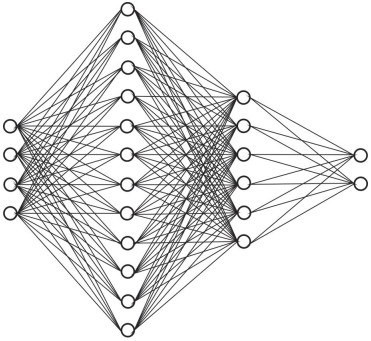
 下载:
下载:
